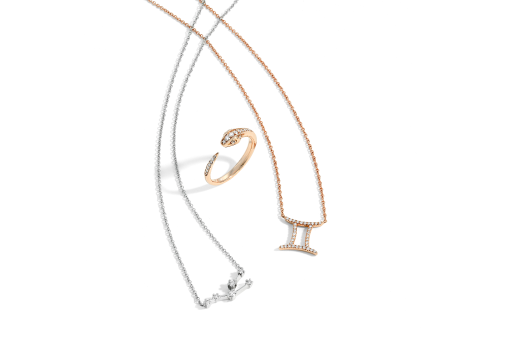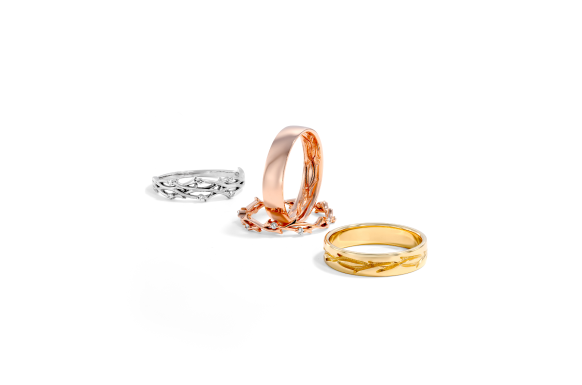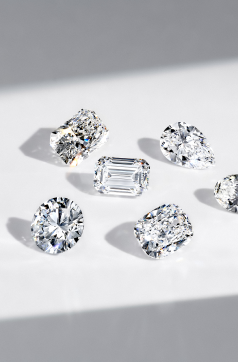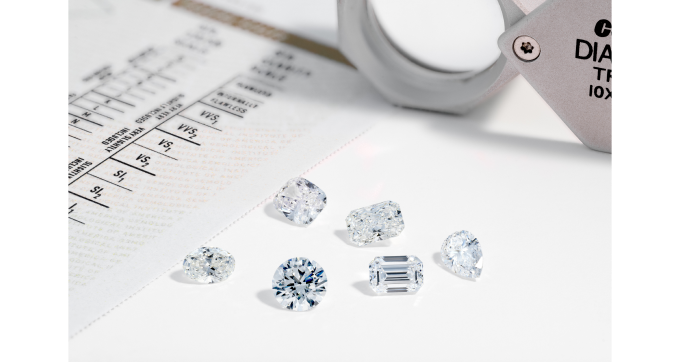When it comes to diamonds, that signature sparkle is just the beginning. Beyond the brilliance, certification is what gives a diamond its credibility. A certified stone comes with verified quality, authenticity, and value, so you know exactly what you're investing in.
Two of the most trusted names in diamond certification are GIA (Gemological Institute of America) and IGI (International Gemological Institute). At Keyzar, every lab-grown and natural diamond is certified by one of these respected institutions, so you can be confident in the quality and authenticity of your stone. Each diamond comes with a certificate in either digital or physical form, and in some cases, both.
While GIA and IGI are both highly regarded, they follow different grading standards, pricing models, and approaches, especially when it comes to lab-grown diamonds. This side-by-side look at GIA vs. IGI will help you understand what sets them apart and which certification is the best fit for your piece.
What Are Diamond Certifications and Why Do They Matter?
A diamond certification (also known as a grading report) is an official document issued by a trusted gemological laboratory. It outlines a diamond’s quality based on the 4 Cs: cut, color, clarity, and carat weight. Each certification reflects an expert, independent evaluation and serves as proof that the diamond has been thoroughly assessed and verified.
Since diamonds can look similar but vary greatly in value, certification is your key to buying with confidence. It protects you from misrepresentation, ensures transparency in quality, and provides peace of mind that the diamond you’re investing in is exactly what the seller claims it to be. This is especially important when shopping online or comparing stones from different jewelers.
Who Are GIA and IGI?
The Gemological Institute of America (GIA) has been setting the global standard for diamond grading since 1931. They’re known for their strict grading scale and are widely regarded as the most trusted authority in the industry. GIA created the 4Cs, which are now used around the world to evaluate diamonds. Their grading is consistent and conservative, especially for natural diamonds.
The International Gemological Institute (IGI) was founded in 1975 and has become one of the most recognized labs globally, especially in Europe and Asia. IGI has also become a leader in grading lab-grown diamonds, offering detailed and accessible certification that has made them a go-to for many brands and manufacturers. Their reports are respected, but their grading can be slightly more lenient compared to GIA, particularly for natural diamonds.
GIA vs IGI – Key Differences in Diamond Grading
While both labs grade diamonds based on the 4Cs, the way they interpret and assign those grades can differ. Here’s how they compare across key areas.
Grading Standards – Which Lab Is More Consistent?
When it comes to consistency, GIA is known for applying stricter, more conservative standards, especially for natural diamonds. This means a GIA-graded diamond has been evaluated with a high level of precision before receiving its final grade.
IGI’s grading can be more flexible, particularly in areas like clarity and color. For instance, a diamond graded as a G color by IGI might be considered an H by GIA, which is why it’s important to compare diamonds within the context of each lab’s grading approach. That difference can affect pricing, and more importantly, it matters when you’re comparing stones, planning to resell, or getting your diamond appraised for insurance. Consistent grading helps ensure you’re paying the right price and protecting the value of your diamond in the future.
Clarity and Color Grading Differences
GIA’s consistency in grading clarity and color has helped establish its strong reputation in the industry. Their reports are known for aligning closely with strict grading standards, which is one reason GIA-certified diamonds may be priced a bit higher.
IGI is also a respected lab, and their grading can be slightly more flexible depending on the diamond. The same stone might receive a marginally higher color or clarity grade from IGI compared to GIA. This isn’t a reflection of quality, but rather a difference in grading style: something to keep in mind when comparing stones.
Cut Grading – Who Does It Better?
Cut is often considered the most important of the 4 Cs because it directly affects a diamond’s brilliance. GIA’s cut approach is known for its precision, especially with round brilliant diamonds. Their strict parameters are designed to ensure optimal sparkle, symmetry, and light performance.
IGI also offers reliable cut grading, though it can vary slightly depending on the lab location and the type of diamond being evaluated. Their approach is generally more flexible, which may appeal to shoppers looking for a wider range of options. IGI is also recognized for its accessibility and faster turnaround times, making it a popular choice, especially for those shopping on a tighter timeline or budget.
Which Certification is More Reliable?
Both GIA and IGI are well-established and trusted in the diamond industry, but they approach grading a bit differently, and that affects how reliability is perceived.
GIA is known for its highly consistent and conservative grading standards, particularly with natural diamonds. Their reports are regarded as among the most precise, making them a popular choice for buyers who want confidence in long-term value, resale, and comparison across the market.
IGI is also a respected name, with a global presence and faster turnaround times. Their grading tends to be slightly more flexible, which can make diamonds with IGI reports appear more competitively priced. IGI-certified diamonds are still accurately assessed, and for many shoppers, the accessibility and efficiency IGI offers are strong advantages. In short, both certifications are reliable, and you won’t regret buying a stone with either one.
Price Differences – Does Certification Affect Diamond Cost?
Yes, certification can directly impact the cost of a diamond. A diamond graded by GIA often comes at a premium, not necessarily because the stone is better, but because GIA is known for strict grading standards. That reputation for accuracy and consistency gives buyers and jewelers added confidence, which can increase demand and therefore price.
Diamonds graded by IGI may be priced lower, partly because their grading tends to be more flexible. As a result, a diamond might receive a slightly higher color or clarity grade from IGI than it would from GIA, which can affect how it’s priced. This often means buyers can get more carat weight or upgraded features for the same budget. In short, certification doesn’t just describe a diamond’s quality: it can influence its market value, too.
Which Certification Should You Choose? GIA or IGI?
The right certification depends on your priorities, your budget, and the type of diamond you're buying.
-
Choose GIA if you value consistent grading, strong resale potential, and the peace of mind that comes with one of the most trusted labs in the industry. This is especially important when purchasing a natural diamond, where strict grading standards help ensure you know exactly what you’re getting.
-
Go with IGI if you’re working within a set budget, or buying in a region where IGI is more commonly used. Their reports are reliable and widely accepted. However, it’s worth noting that IGI’s grading can be slightly more generous in areas like color and clarity. That means a diamond graded by IGI might not align exactly with GIA’s scale, which can make a difference when comparing quality or long-term value.
GIA vs IGI - Which One is Right for You?
Both GIA and IGI bring something meaningful to the table. GIA is ideal for those seeking precision and tradition, while IGI offers beauty, value, and accessibility. Whether you're looking for lasting heirloom quality or the freedom to go bigger without compromise, Keyzar has a certified diamond that’s just right for you. Your perfect stone is waiting, so shop now and make it yours!






